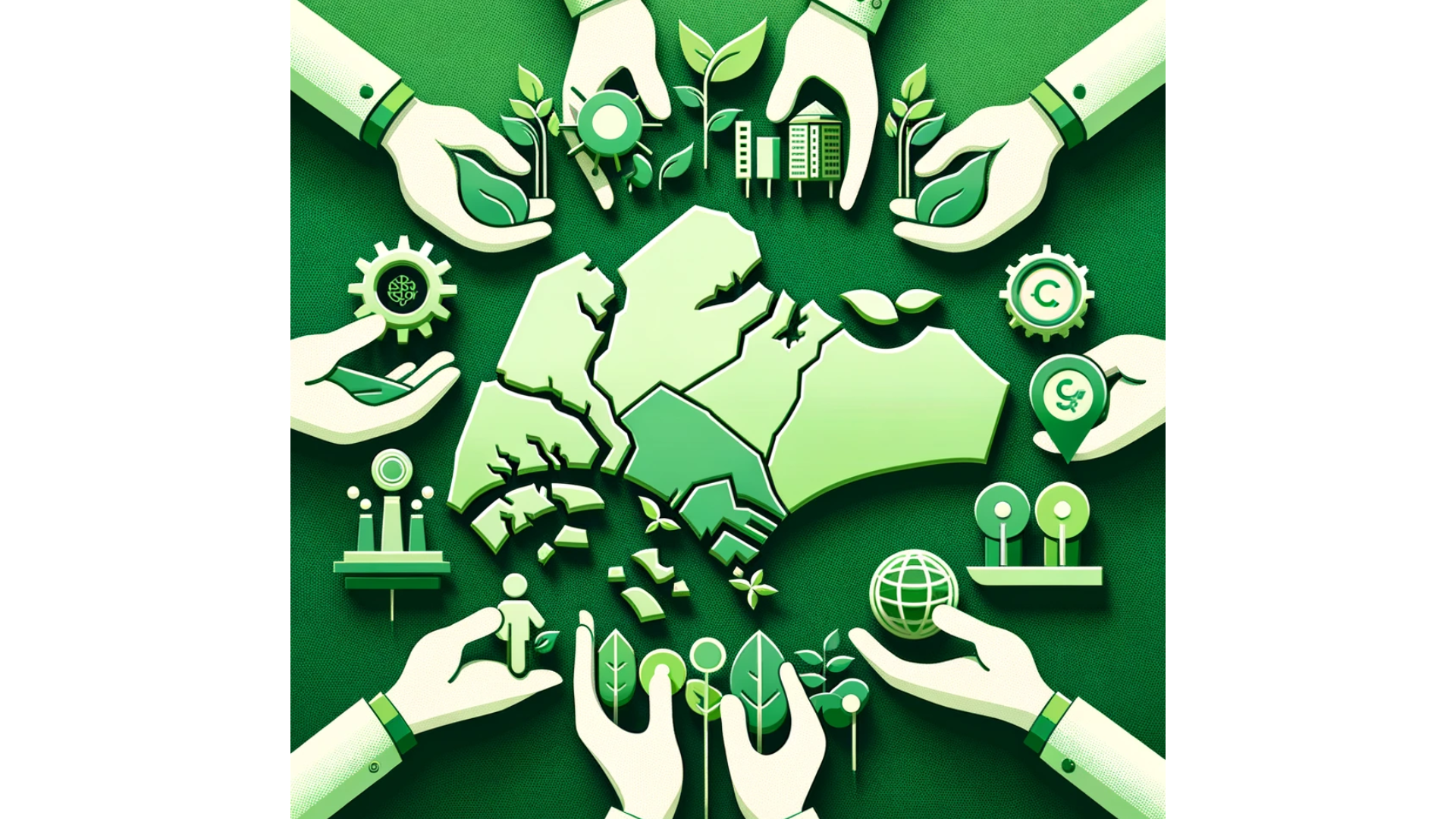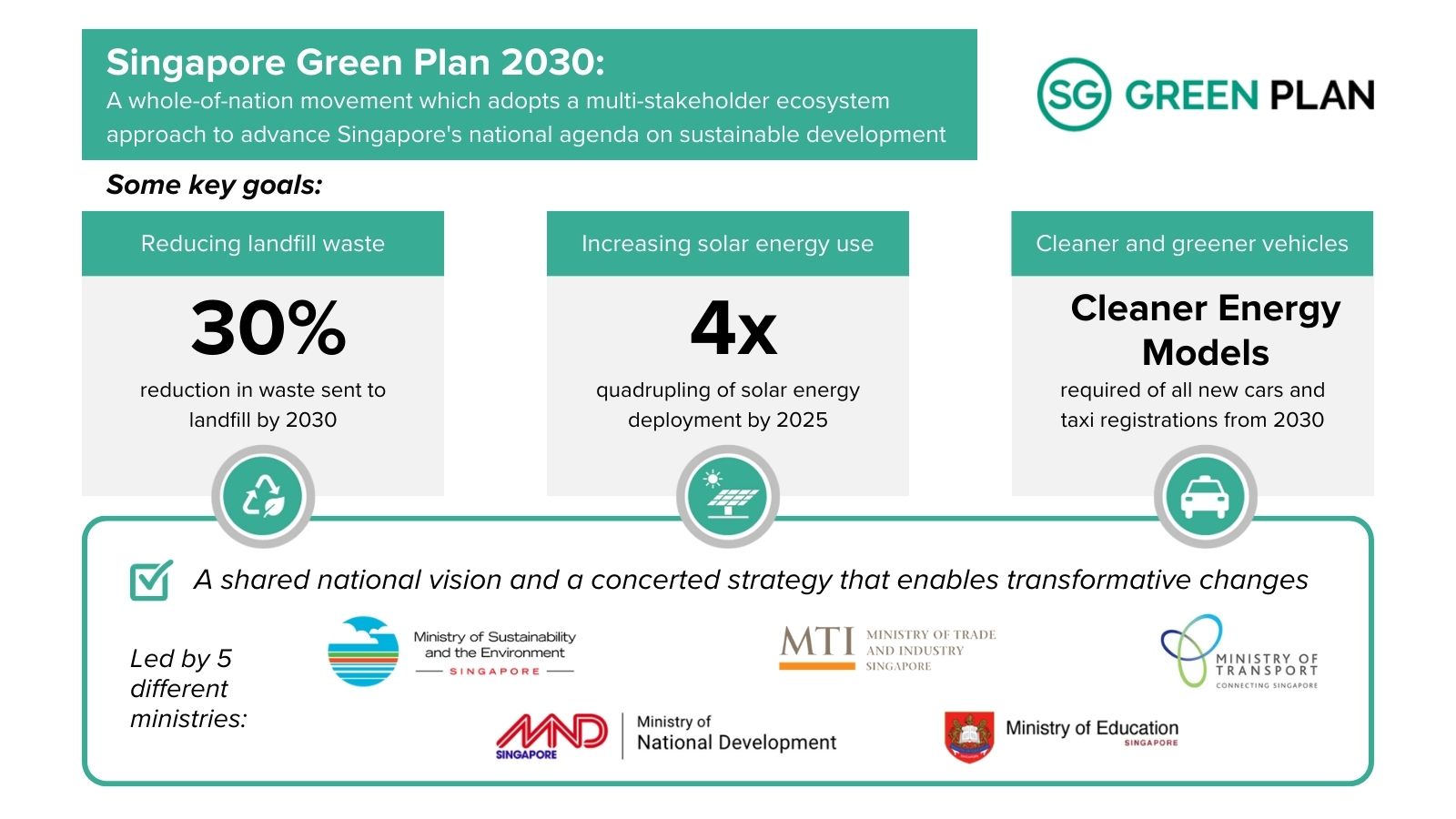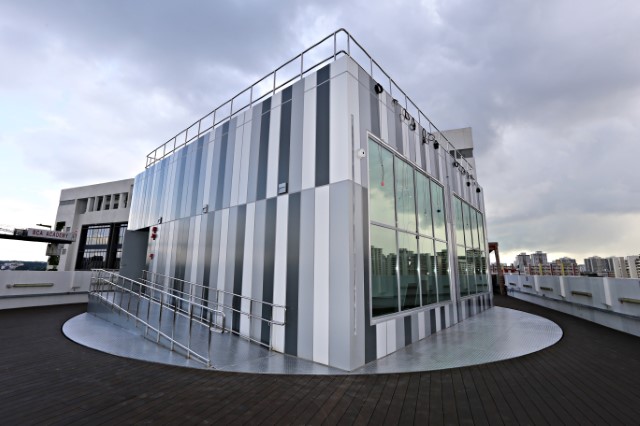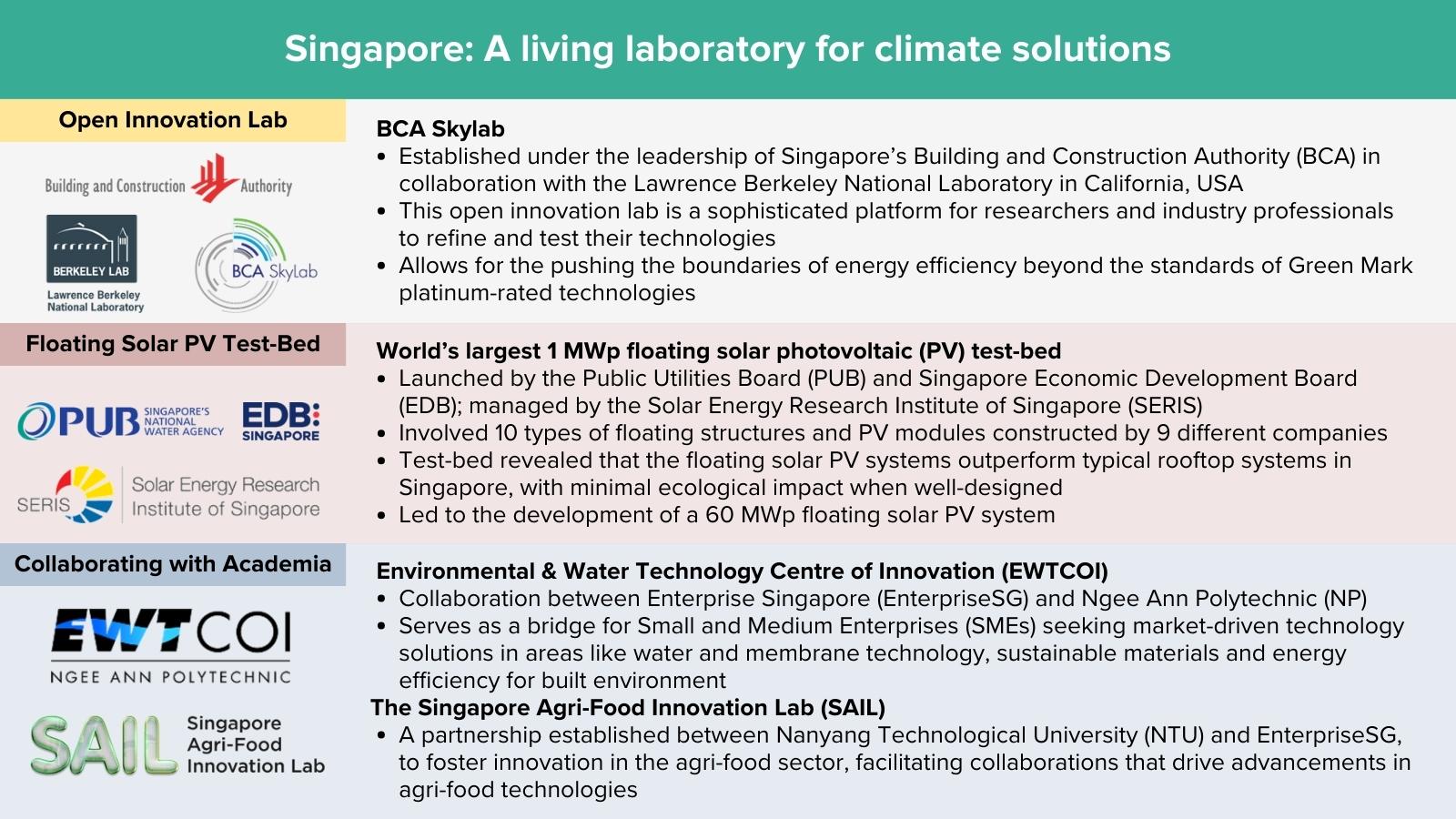This is the first article of our Article Series titled Accelerating Innovation: A Multistakeholder Ecosystem Approach to Tackling Climate Change
Singapore’s climate action ecosystem for fostering sustainable development
December 5, 2023

This first article will take a closer look at the key foundations of Singapore’s climate strategy and its successful whole-of government approach. We will explore the role of public-private partnerships, and how government and academia play a crucial role in sparking innovation and advancing efforts to tackle climate change. Through the examination of specific initiatives within the climate innovation ecosystem, we’ll witness how Singapore has transformed into a dynamic living laboratory for pioneering climate solutions.
Singapore’s Ambitious Climate Goals
Singapore faces a unique set of climate risks and challenges due to its national circumstances. Several factors contribute to this vulnerability, including limited renewable energy options, low-lying coastal areas that are particularly susceptible to rising sea levels, high population density, which impose stress on limited natural resources, and constrained land space to scale up solar power, the most viable renewable energy alternative. Additionally, Singapore’s highly dependent economy on the global chain for food and energy makes it highly sensitive to escalating climate impacts. To address these challenges, Singapore has been proactive in setting bold and ambitious goals and adopting mitigation and adaption measures to improve its resilience. By 2030, the nation has committed to reducing emissions to approximately 60 MtCO2e after peaking earlier, marking a significant milestone on its journey towards achieving net-zero emissions by 2050. These objectives are part of a well-structured plan that involves a comprehensive whole-government approach and strategic technology investments aimed at accelerating the transition to a low-carbon economy across industry, and society, and all sectors.
A multi-stakeholder ecosystem approach: The Singapore Green Plan 2030
Paving the way for a net-zero future requires an ecosystem collaboration approach among key stakeholders, a shared national vision and a concerted strategy that enables transformative changes across key sectors. In 2021, the Government of Singapore launched the Singapore Green Plan 2030 (Green Plan). Led by five ministries -the Ministries of Sustainability and the Environment (MSE), Trade and Industry (MTI), Transport (MOT), National Development (MND), and Education (MOE)- the Green Plan charts ambitious and concrete targets over the next 10 years, including the quadrupling of solar energy deployment by 2025, a 30% reduction in waste sent to landfill by 2030, and for all new car and taxi registrations to be cleaner-energy models from 2030.

A summary of the Singapore Green Plan 2030
Singapore’s climate change policies from a whole-of-government perspective
The Green Plan’s multistakeholder approach is not new to Singapore, it is, in fact, a continuation of a whole-of-government movement that emphasizes the necessity of engaging the entire nation and every individual in the battle against climate change. This collective vision, led by the Inter-Ministerial Committee on Climate Change (IMCCC), is built on the concept that having sound and well-coordinated climate policy aspirations and strategies will provide clear guidance to different players on their role of combating climate change. This approach has also been designed to minimize disruptions to the economy and workforce while facilitating an inclusive transition and enabling Singapore to remain competitive in a carbon-constrained world.
Central to Singapore’s climate strategy is its capacity to engage key stakeholders in co-creating and co-delivering solutions, raising awareness, and fostering innovation and collaboration to tackle climate change. Strong governmental commitment has been instrumental in nurturing the growth of numerous public-private partnerships addressing sustainability's crosscutting issues. For instance, the National Research, Innovation, and Enterprise 2020 plan have earmarked US$660 million for R&D and deployment initiatives related to urban solutions and sustainability. The S$50 million SG Eco Fund was also set up in 2020 to support ground-up community projects that advance environmental sustainability.
Singapore: A living laboratory for climate solutions
Thanks to substantial government investment in R&D, a conducive business environment, and a world-class legal framework, Singapore has evolved into a living laboratory where various stakeholders can develop, test, and commercialize climate solutions that can be scaled up regionally and globally. A prime example is BCA SkyLab, established under the leadership of Singapore’s Building and Construction Authority (BCA) in collaboration with the Lawrence Berkeley National Laboratory in California. This open innovation lab offers industry professionals and researchers a sophisticated platform to refine and test their technologies, pushing the boundaries of energy efficiency beyond the standards of Green Mark platinum-rated technologies.

BCA SkyLab
Another example where Singapore leveraged this living laboratory model to trial innovative technologies was the launch of the world’s largest 1 MWp floating solar photovoltaic (PV) test-bed on Tengeh Reservoir by the Public Utilities Board (PUB) and Singapore Economic Development Board (EDB) in 2016. Managed by the Solar Energy Research Institute of Singapore (SERIS), this ambitious project involved 10 types of floating structures and PV modules constructed by 9 different companies, enabling an extensive analysis of performance. The findings revealed that the floating solar PV systems outperform typical rooftop systems in Singapore, with minimal ecological impact when well-designed. Consequently, PUB greenlit the development of a 60 MWp floating solar PV system on Tengeh Reservoir.
Academia has also played a key role in providing the intellectual and resource-based foundation for testing innovative ideas and turning them into practical solutions. For instance, The Environmental & Water Technology Centre of Innovation (EWTCOI), a collaboration between Enterprise Singapore (EnterpriseSG) and Ngee Ann Polytechnic (NP), serves as a bridge for Small and Medium Enterprises (SMEs) seeking market-driven technology solutions in areas like water & membrane technology, sustainable materials and energy efficiency for built environment. Similarly, Nanyang Technological University (NTU), in partnership with EnterpriseSG, established the Singapore Agri-Food Innovation Lab (SAIL). This multi-sector platform facilitates collaborations between corporates, start-ups, SMEs, research institutes, and institutes of higher learning (IHLs) in areas of sustainability, digitalization, agri-inputs, and downstream R&D.

Examples of Singapore leveraging the living laboratory model
“Singapore has established itself as a hub for the rapid development, testing, and deployment of climate-tech solutions, bolstered by robust public-private partnerships and extensive cross-industry collaboration. It’s this kind of multi-stakeholder cooperation that’s pivotal in accelerating climate action.”
Remarks Joe Hooper, Director of the UNDP Global Centre in Singapore
This Article Series is a collaboration between the EDB and the UNDP Global Centre for Technology, Innovation, and Sustainable Development. Learn more about how Singapore is partnering the region to advance sustainability and drive green growth opportunities in Asia here.

 Locations
Locations